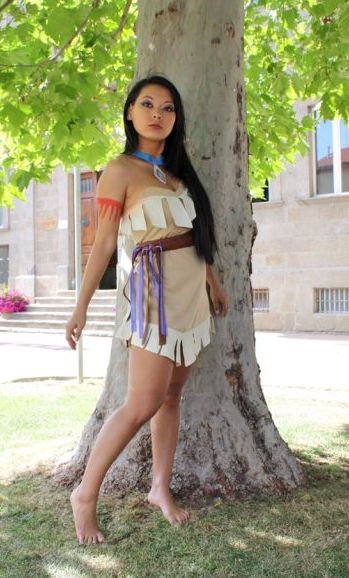|
|
Native American Girl
|
From the 16th through the 19th centuries, the population of Native Americans declined in the following ways: epidemic diseases brought from Europe; genocide and warfare at the hands of European explorers and colonists, as well as between tribes; displacement from their lands; internal warfare, enslavement; and a high rate of intermarriage. Most mainstream scholars believe that, among the various contributing factors, epidemic disease was the overwhelming cause of the population decline of the American natives because of their lack of immunity to new diseases brought from Europe. With the rapid declines of some populations and continuing rivalries among their nations, Native Americans sometimes re-organized to form new cultural groups, such as the Seminoles of Florida in the eighteenth century and the Mission Indians of Alta California.
Estimating the number of Native Americans living in what is today the United States of America before the arrival of the European explorers and settlers has been the subject of much debate. While it is difficult to determine exactly how many Natives lived in North America before Columbus, estimates range from a low of 2.1 million (Ubelaker 1976) to 7 million people (Russell Thornton) to a high of 18 million (Dobyns 1983). A low estimate of around 1 million was first posited by the anthropologist James Mooney in the 1890s, by calculating population density of each culture area based on its carrying capacity. In 1965, the American anthropologist Henry Dobyns published studies estimating the original population to have been 10 to 12 million. By 1983, he increased his estimates to 18 million. He took into account the mortality rates caused by infectious diseases of European explorers and settlers, against which Native Americans had no immunity. Dobyns combined the known mortality rates of these diseases among native people with reliable population records of the 19th century, to calculate the probable size of the original populations. By 1800, the Native population of the present-day United States had declined to approximately 600,000, and only 250,000 Native Americans remained in the 1890s.
Chicken pox and measles, although by this time endemic and rarely fatal among Europeans (long after being introduced from Asia), often proved deadly to Native Americans. Smallpox proved particularly fatal to Native American populations. Epidemics often immediately followed European exploration and sometimes destroyed entire village populations. While precise figures are difficult to determine, some historians estimate that at least 30% (and sometimes 50% to 70%) of some Native populations died after first contact due to Eurasian smallpox. One element of the Columbian exchange suggests explorers from the Christopher Columbus expedition contracted syphilis from indigenous peoples and carried it back to Europe, where it spread widely. Other researchers believe that the disease existed in Europe and Asia before Columbus and his men returned from exposure to indigenous peoples of the Americas, but that they brought back a more virulent form.
In 1618–1619, smallpox killed 90% of the Native Americans in the area of the Massachusetts Bay. Historians believe many Mohawk in present-day New York became infected after contact with children of Dutch traders in Albany in 1634. The disease swept through Mohawk villages, reaching the Onondaga at Lake Ontario by 1636, and the lands of the western Iroquois by 1679, as it was carried by Mohawk and other Native Americans who traveled the trading routes. The high rate of fatalities caused breakdowns in Native American societies and disrupted generational exchanges of culture.
|
|









